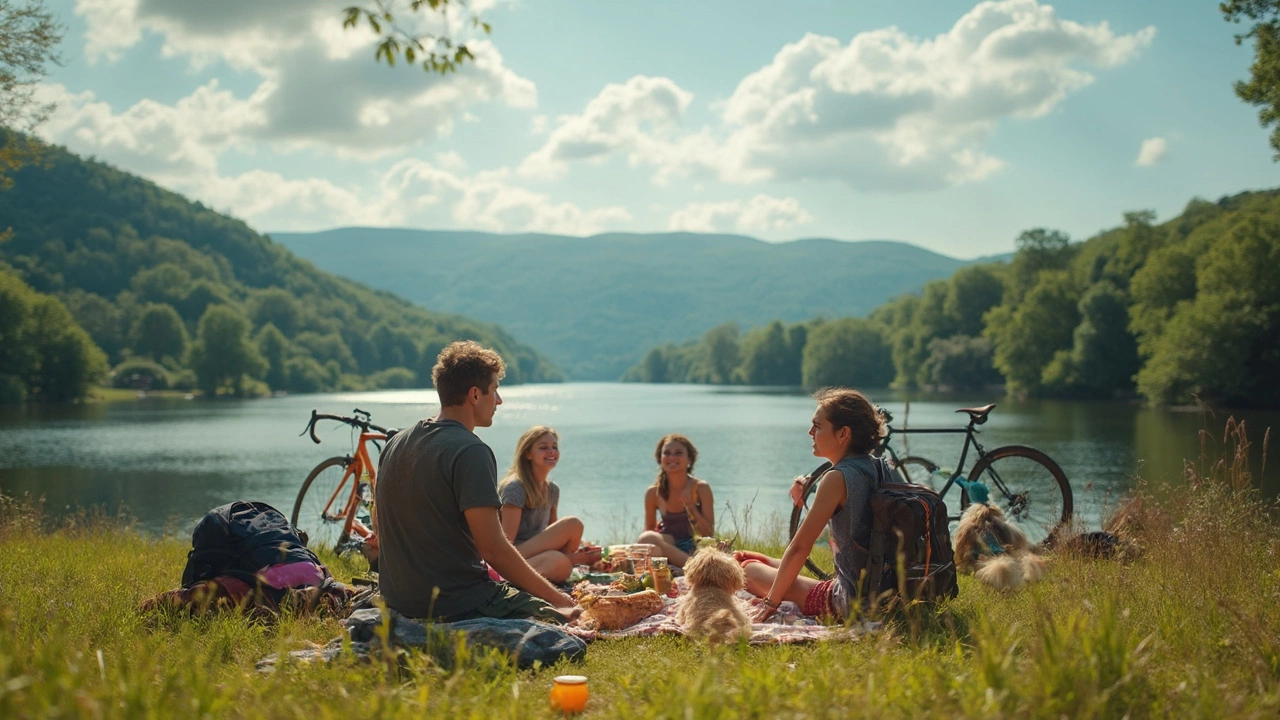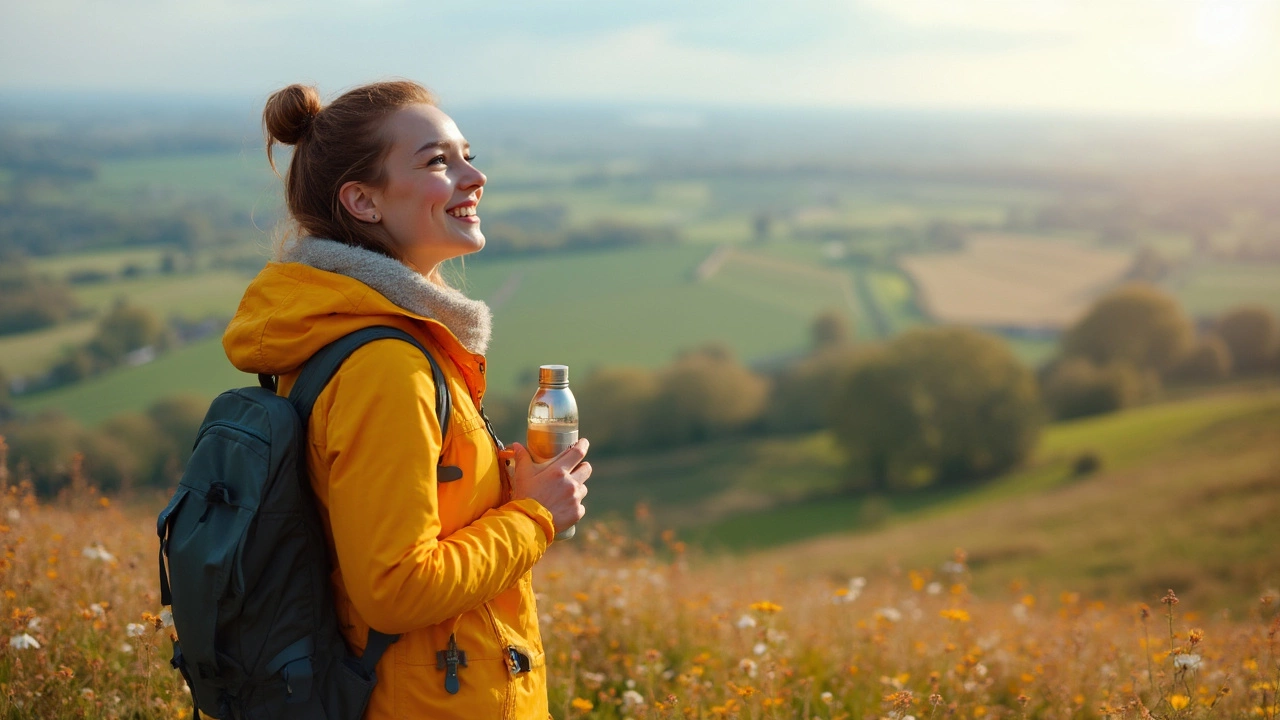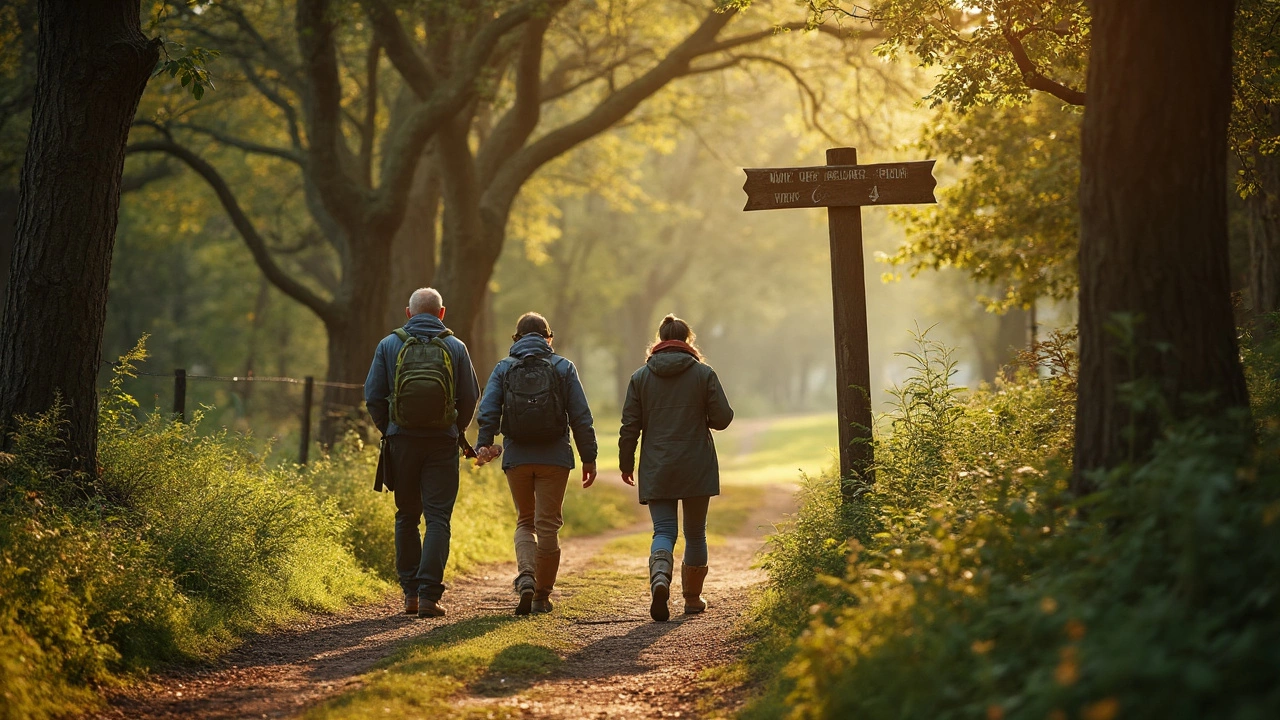5 Fun Outdoor Recreational Activities You Should Try
 May, 4 2025
May, 4 2025
Feeling cooped up or just bored with the usual weekend routine? Getting outside works wonders for your mood and your health. Simple activities can turn a regular day into something memorable, and you don’t need fancy gear or weeks of planning.
Outdoor recreation isn’t just for hardcore athletes or campers. There’s a whole menu of fun things you can do that don’t require training or superhuman stamina. I’m talking about stuff you can jump into right now or plan with your friends for next weekend.
Ever wonder which outdoor activities actually feel rewarding and aren’t just another trend you’ll try once and quit? I’ve got five tried-and-true options anyone can take on—whether you’re chasing a thrill, chilling out, or just need fresh air. Ready to shake things up? Here’s what works in real life.
- Hiking and Trail Walking
- Cycling Adventures
- Kayaking and Canoeing
- Outdoor Picnics
- Frisbee and Disc Golf
Hiking and Trail Walking
If you’ve tried hiking before, you know there’s nothing quite like clearing your head with fresh air and movement. Trail walking and hiking are pretty much the easiest ways to get into outdoor activities—no fancy gear needed, just a solid pair of shoes and maybe a water bottle. In the U.S. alone, over 57 million people hiked at least once in 2023, according to the Outdoor Industry Association. It’s popular, and for good reason.
The best part? You can find local trails almost everywhere—city parks, suburbs, even rural backroads. Sites like AllTrails or state park websites let you search for hikes near your area, with difficulty ratings and recent trail comments from other hikers.
- For beginners, stick with marked paths a mile or two long. These are well maintained and easy to follow.
- Once you get the hang of it, trails with some elevation or unique scenery (like waterfalls or overlooks) add a little challenge and make it fun.
- Always check the weather and trail status before heading out. Wet trails can get muddy fast and some parks may close trails after storms.
Here’s a quick gear checklist that covers what most people really need:
- Comfortable shoes: Nothing ruins a hike faster than sore feet.
- Water: Take more than you think you’ll need, especially on hot days.
- Snacks: A granola bar or fruit can help keep your energy up.
- Sun protection: Hat, sunscreen, and sunglasses—even if it’s cloudy.
- Maps or trail apps: Phones work but cell coverage isn’t a sure thing on every trail.
One more thing: Don’t leave trash behind. Stick to the Leave No Trace rule so the beauty’s still there next time. Whether you go solo or with friends, hiking and trail walking really are the most accessible recreational activities out there—and you can start right outside your door.
Cycling Adventures
If you like moving at your own pace and exploring fresh scenery, cycling is easily one of the top outdoor activities to try. Whether you pick a mountain trail, a riverfront path, or just circle around your neighborhood, riding a bike fits both beginners and people who want a real workout.
The best part? You don’t need an expensive bike to start. Even a well-maintained used bike will do the job. City bike-sharing programs are popping up everywhere, so there’s no excuse if you don’t own one. Just grab a helmet and you’re good to go. Studies show that just 30 minutes of biking per day can cut your risk of heart disease almost in half. That’s a pretty strong argument to get moving.
Not sure where to start? Here’s a quick checklist for a safe and fun ride:
- Check your tires for proper air. It helps avoid slowdowns or flats.
- Make sure your brakes work. Give each lever a squeeze before taking off.
- Wear a helmet every single time. Most serious bike injuries happen to people who skip this step.
- Bring water, especially on warm days. Dehydration sneaks up fast.
- Pick a route that matches your fitness level. Apps like Strava or Komoot can help with local suggestions.
Keen to go a bit further? Riders in the U.S. clock over 47 billion miles every year, according to transportation stats. It’s not just exercise—it's one of the most practical recreational activities because you can squeeze it into your day, whether it’s a trip to the park or commuting to work. Plus, cycling is easy on your joints compared to running or high-impact sports.
You can also join local cycling groups for extra motivation and safety, or try themed rides—yes, glow-in-the-dark bike parades are a thing. And if you want to keep track of your effort, cycling computers or apps can show your speed, distance, and even calories burned. Just keep it simple at first—sometimes the best rides are the spontaneous ones where you just see where the road takes you.

Kayaking and Canoeing
You don’t need to be an Olympic athlete to get into kayaking or canoeing. Most lakes, rivers, and even urban waterfronts have places where you can rent a kayak or canoe for a few hours or a whole day. It’s a solid way to enjoy outdoor activities that combine movement with a peaceful setting, and you decide how challenging you want it to be.
If you want an easy start, calm lakes are the way to go. The water is usually flat, so you can focus on getting comfortable with the paddle. On the other hand, rivers give you a bit more action—think gentle currents or even some light rapids for the adventurous types. Here’s a pro tip: always check the weather before heading out. Sudden storms make paddling a lot less fun and a lot more risky.
What’s the difference between kayaking and canoeing? Kayaks use double-bladed paddles, and you sit inside with your legs extended. Canoes usually use single-bladed paddles, and you kneel or sit on a bench inside the boat. Kayaks can feel more stable to beginners because you’re sitting lower in the water.
If you’re worried about not having the gear, don’t be. Nearly all rental spots provide a paddle and a life jacket. Some even give a quick lesson if you ask. Don’t skip the life jacket—water doesn’t care if you’re a superstar swimmer.
- Stick to designated launch spots; it’s safer and keeps local wildlife happy.
- Bring water and sunscreen—sunburn feels worse when you’re out on the water.
- Check the return time for rentals so you don’t get extra fees.
- Wear sandals or water shoes. Sneakers get soaked, and nobody likes squishy feet.
If you’re into tracking progress, here’s a quick look at energy use. Paddling burns calories—moderate kayaking for an hour can burn 250-400 calories, depending on your weight and pace. That’s more than an hour-long brisk walk and way more fun.
| Activity | Calories Burned (1 hour) |
|---|---|
| Kayaking (Easy Pace) | 250-300 |
| Canoeing (Recreational) | 200-250 |
| Hiking (Flat Trail) | 180-250 |
Whether you’re alone or with a few friends, kayaking and canoeing are chill ways to enjoy nature, sneak in a workout, and maybe spot some turtles or herons. Take it slow, and you’ll walk away with a story or two—plus some legit bragging rights.
Outdoor Picnics
An outdoor picnic might sound basic, but it’s a true crowd-pleaser, no matter your age or group size. It’s all about good food, easy company, and a chill spot in the fresh air. You don’t need a park with a fancy name, either—a shady patch at your local green space, a quiet beach area, or even a big backyard does the trick.
The trick is to pack smart, not heavy. Go for easy-to-carry foods like sandwiches, wraps, fruit, and plenty of water. Soft drinks or homemade iced tea hit the spot, especially in warm weather. Want to avoid soggy sandwiches? Pack your bread and fillings separately and assemble them on the spot.
A few quick tips to make your picnic easy (and keep the ants away):
- Use a cooler bag or insulated backpack to keep things fresh.
- Bring a blanket that washes easily or portable camping chairs.
- Opt for compostable plates and cups if you want less cleanup and less plastic waste. Some communities are starting to require this at parks—always check the rules ahead.
- Wet wipes and trash bags are your secret weapons for messy hands and quick cleanup.
If you’ve got kids or a playful crowd, pack a frisbee, a deck of cards, or a ball to kick around. Organized games aren’t required, but a little friendly competition never hurts.
Picnics aren’t just about the food. According to a 2022 report from the National Recreation and Park Association, over 50% of Americans said their top outdoor activity was picnic-style dining in parks or on public lawns. It’s simple, affordable, and you barely need gear.
Want to avoid crowded picnic spots? Try early mornings or late afternoons. Plus, picking a weekday instead of the weekend means you’ll compete with fewer people for the best shady spots.
Long story short: with a little prep, an outdoor picnic is one of those recreational activities that anyone can do, anywhere. It’s low-pressure, laid-back, and all about connecting with good company (and nature).

Frisbee and Disc Golf
Nothing says simple fun like tossing a Frisbee around. Whether you’re at the park, a beach, or just a decent-sized backyard, you only need a disc and a bit of open space. It’s a stress-free way to get moving, laugh, and even sneak in a little workout. Plus, regular Frisbee can improve hand-eye coordination and boost your reflexes. Bring a dog along? Even better—most breeds never get bored chasing a flying disc.
If you want to take things further, try Disc Golf. This outdoor sport is like regular golf but with plastic discs—and you aim for metal baskets instead of holes. It’s exploded in popularity, especially since the 2020 pandemic got people looking for safe outdoor hobbies. As of 2024, there are more than 14,000 disc golf courses worldwide, and over 70% are totally free to play. You don’t need fancy discs to start. Many courses have beginner-friendly layouts, and you can usually try with just one or two basic discs.
What makes disc golf so good for anyone? You decide your pace. Play solo, as a pair, or get a group together. Walking the course burns calories—an hour of disc golf can easily rack up over 6,000 steps. Plus, all ages can play side by side. No waiting for slow players, no need for tee times, and the gear is cheap.
- Look up public parks or recreation centers nearby—many have courses or open spaces perfect for tossing a disc.
- Buy a starter Frisbee or disc golf set online for under $25.
- Download course maps or scorecards for free—apps like UDisc and Disc Golf Scene list courses everywhere.
- Invite friends or family for a casual afternoon. Teams or solo play can both work.
If you’re looking for a hobby that mixes fresh air with light competition and social time, Frisbee and disc golf hit the sweet spot. They’re super accessible, don’t break the bank, and there’s always a new trick or shot to master.